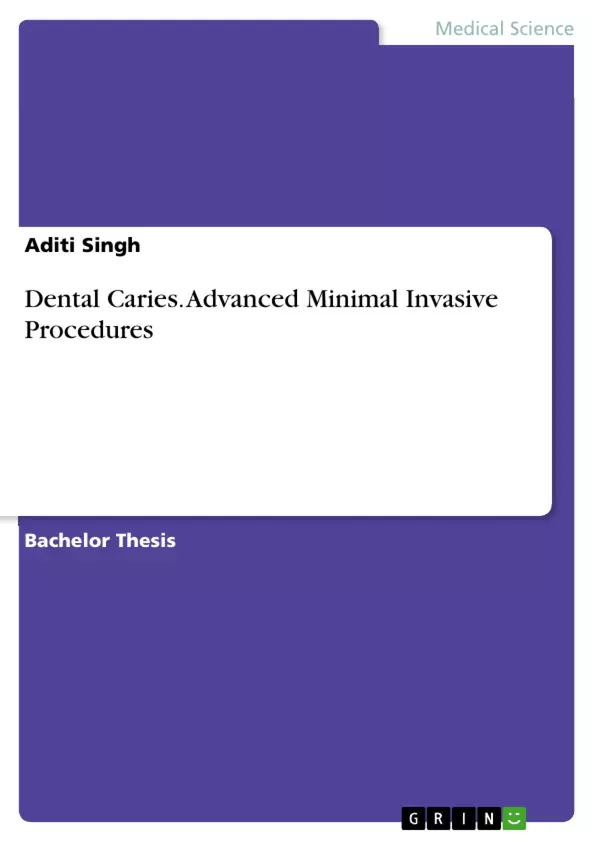Dental caries is a multifactorial disease that has many contributing factors, including biological, genetic, socioeconomic, cultural, and environmental issues. It’s the localized destruction of susceptible dental hard tissue by acidic by-products from bacterial fermentation of dietary carbohydrates.
Dental caries is the main reason for placement and replacement of restorations. The demineralization process occurs because of high consumption of sugary and/or starchy foods and sugared beverages, combined with insufficient fluoride exposure, inappropriate oral hygiene, and/or poor salivary flow.
The replacement of restorations can result in cavity preparations larger than the predecessors, which leads to weakening of the remaining tooth structure. The longevity of a restoration is attributed to the restorative material properties, the technical quality of the restorative procedure and the patient’s compliance with appropriate maintenance of their oral hygiene.
The minimal intervention paradigm emphasizes use of adhesive restorative materials in order to minimize the size of cavity preparation. This new medical model, known as Minimally Invasive Dentistry (MID), is a conservative philosophy that reduces restorative procedure time, pain and stress, and results in decreased patient anxiety.
MID emphasizes that initial caries lesions in the enamel can be repaired by increasing the amounts of calcium, phosphate and fluoride in the saliva. Also, when a lesion needs to be restored, MID emphasizes adhesive restorative techniques, which allow removal of the decay in a way that involves minimal loss of healthy tooth structure. The term “minimal intervention” was endorsed by the Federation Dentaire Internationale in a 2002 policy statement and is globally recognized.
Inhaltsverzeichnis (Table of Contents)
- Acknowledgement
- INTRODUCTION
- REVIEW OF LITERATURE
- HISTORY
- DENTAL CARIES
- DEFINING DENTAL CARIES
- HISTORICAL PREVIEW
- DENTAL BIOFILM
- ROLE OF DENTAL BIOFILM IN ORAL HEALTH & DISEASES
- CHEMISTRY OF DENTAL CARIES
- DYNAMICS OF TOOTH SURFACE
- PROCESS OF DE-MINERALIZATION
- REMINERALIZATION
- THE ORAL ENVIRONMENT
- SALIVA
- DIET
- TEETH
- DETECTION & DIAGNOSIS OF DENTAL CARIES
- FLUORESCENCE TECHNIQUE
- LASER FLUORESCENCE- The DIAGNODent
- DETECTION SYSTEM BASED ON ELECTRIC CURRENT MEASUREMENT
- ULTRASOUND TECHNIQUE
- THE ICDAS SYSTEM (International Caries Detection and Assessment System)
- ROOT CARIES
- CLASSIFICATION OF DENTAL CARIES
- CAMBRA (CARIES MANAGEMENT BY RISK ASSESSMENT)
- NON-INVASIVE MANAGEMENT OF DENTAL CARIES
- OPTIMAL CARIES PREVENTIVE MEASURES
- CHEMO-MECHANICAL METHOD OF CARIES REMOVAL
- CHEMOMECHANICAL CARIES REMOVAL VS. MECHANICAL CARIES REMOVAL
- SURGICAL APPROACH TO CARIES MANAGEMENT (THE PRINCIPLE)
- MECHANICAL METHODS OF CARIES MANAGEMENT
- CONCLUSION
- BIBLIOGRAPHY
Zielsetzung und Themenschwerpunkte (Objectives and Key Themes)
This work aims to provide a comprehensive overview of dental caries, a multifactorial disease that affects individuals of all ages. It examines the historical perspective of the disease, explores the role of dental biofilm in oral health and diseases, and delves into the chemistry of dental caries. The text also covers the detection and diagnosis of dental caries, including various techniques and the ICDAS system. Finally, it emphasizes the importance of non-invasive management approaches, focusing on caries prevention and minimally invasive dentistry.
- The history and prevalence of dental caries
- The role of dental biofilm in oral health and diseases
- The chemistry of dental caries and its mechanisms
- Modern approaches to dental caries detection and diagnosis
- The importance of non-invasive management strategies for dental caries
Zusammenfassung der Kapitel (Chapter Summaries)
The initial chapters provide a historical overview of dental caries, highlighting its prevalence and evolution over time. The text then delves into the intricacies of dental biofilm, examining its role in oral health and diseases. Following this, a thorough exploration of the chemistry of dental caries is presented, covering the dynamics of tooth surface, demineralization, and remineralization processes.
Subsequent chapters focus on the various aspects of dental caries detection and diagnosis, including techniques like fluorescence, laser fluorescence, and ultrasound. The internationally recognized ICDAS system is also discussed.
The book concludes with a strong emphasis on non-invasive management strategies, advocating for preventative measures and minimal intervention approaches to address dental caries.
Schlüsselwörter (Keywords)
The primary keywords and focus topics of the work are dental caries, oral health, dental biofilm, caries management, minimally invasive dentistry (MID), CAMBRA (Caries Management by Risk Assessment), caries prevention, remineralization, demineralization, detection and diagnosis, ICDAS (International Caries Detection and Assessment System).
- Citar trabajo
- Aditi Singh (Autor), 2016, Dental Caries. Advanced Minimal Invasive Procedures, Múnich, GRIN Verlag, https://www.grin.com/document/413699



